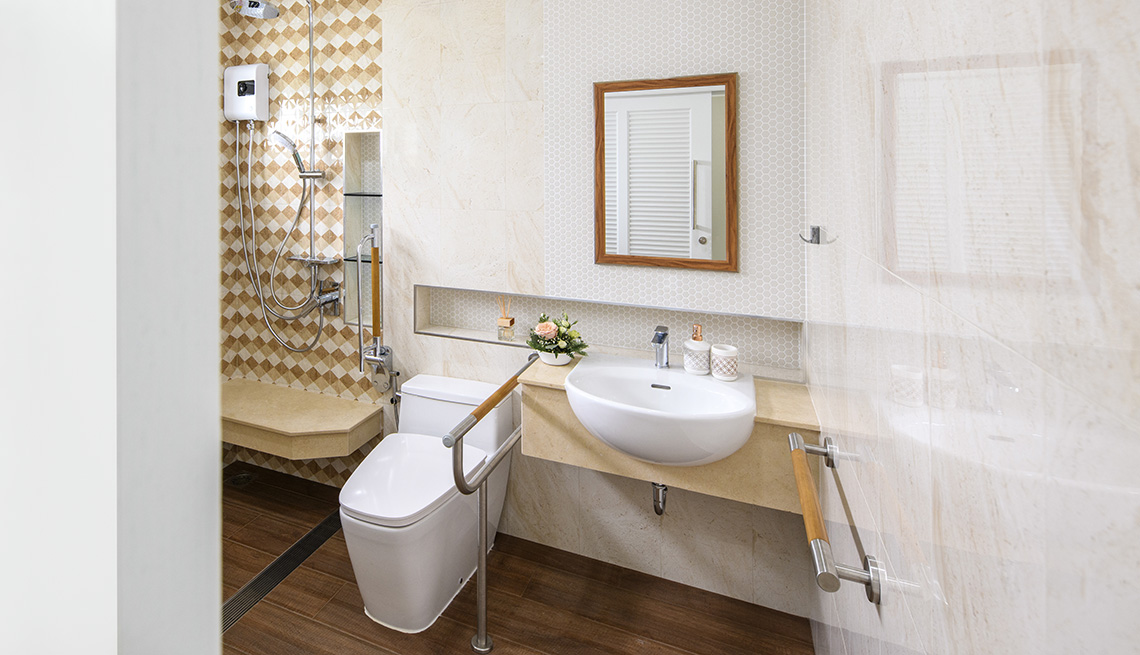When it comes to planning a bathroom safety project, ensuring a secure environment is crucial, especially for seniors. The bathroom, with its slippery surfaces and sharp corners, can pose significant risks. Therefore, it’s essential to take thoughtful steps towards enhancing safety in this space.
In this article, we will guide you through the considerations and steps involved in creating a safer bathroom environment. From selecting the right materials to incorporating helpful tools, your journey to a secure bathroom begins here.

Understanding the Importance of Bathroom Safety
The bathroom can be one of the most dangerous rooms in the house, especially for seniors. Slippery floors, high bathtubs, and lack of support can lead to accidents. According to the Centers for Disease Control and Prevention (CDC), falls are the leading cause of injury among older adults. Hence, planning a bathroom safety project is not just about convenience, but also about ensuring the well-being of your loved ones.
Identifying Key Areas of Concern
Slippery Floors
One of the primary concerns in bathroom safety is the floor. It’s important to choose non-slip materials and consider adding rugs or mats with rubber backings.
Bathe Safely
Bathtubs and showers can be particularly hazardous. Installing grab bars and using non-slip mats can significantly reduce the risk of falls.
Control Water Temperature
Scalding is another risk in the bathroom. Ensure your water heater is set to a safe temperature, typically no higher than 120F (49C).
Selecting the Right Safety Equipment
When planning a bathroom safety project, choosing the right equipment is vital. Here are some essential items to consider:
Grab Bars
Install grab bars near the toilet and in the shower or bathtub. These provide support and help prevent falls.
Shower Chairs
For those with limited mobility, a shower chair can offer a safe and comfortable bathing experience.
Raised Toilet Seats
These can make sitting and standing easier, reducing strain and the risk of falls.
Choosing the Right Materials
When selecting materials, prioritize safety and durability. Non-slip tiles, water-resistant surfaces, and easy-to-clean materials are ideal.
Incorporating Technology
Technology can play a significant role in enhancing bathroom safety. Consider installing motion-sensor lighting and smart water monitors to prevent accidents.
Budgeting for Your Project
It’s important to have a clear budget when planning a bathroom safety project. Consider the cost of materials, labor, and any additional features you wish to include. For more information about the cost of bathroom safety renovations, you can visit [this resource](https://productsseniorslike.com/cost-of-bathroom-safety-renovations/) (rel=’dofollow’).
Hiring the Right Professionals
While some may opt for a DIY approach, hiring professionals can ensure that the project meets safety standards. Look for contractors with experience in bathroom safety renovations.
Maintaining Your Safe Bathroom
Routine maintenance is key to ensuring long-term safety. Regularly check that all equipment is secure and functioning properly.
User Reviews: What Others Are Saying
Before purchasing any safety equipment, check user reviews to ensure quality and effectiveness. You can find user reviews of bathroom safety products [here](https://productsseniorslike.com/user-reviews-of-bathroom-safety-products/) (rel=’dofollow’).
Considering the Best Brands
Choosing reliable brands can make all the difference. To explore the best bathroom safety brands, check [this list](https://productsseniorslike.com/best-bathroom-safety-brands/) (rel=’dofollow’).
Understanding Aging in Place
Creating a safe bathroom is part of a broader approach called aging in place. This concept focuses on making homes adaptable for seniors to live independently. Learn more about aging in place bathroom designs by visiting [this page](https://productsseniorslike.com/aging-in-place-bathroom-designs/) (rel=’dofollow’).

FAQ
1. Why is bathroom safety important for seniors?
Bathroom safety is crucial for seniors to prevent falls and injuries, allowing them to maintain independence.
2. What are some essential safety features for a bathroom?
Essential safety features include grab bars, non-slip flooring, shower chairs, and raised toilet seats.
3. How can technology enhance bathroom safety?
Technology such as motion-sensor lighting and smart water monitors can prevent accidents and improve safety.
For additional information on improving bathroom safety for seniors, you can visit this [external resource](https://www.bathfitter.com/us-en/blog/how-to-improve-bathroom-safety-for-seniors/) (rel=’nofollow’).
This article contains affiliate links. We may earn a commission at no extra cost to you.

